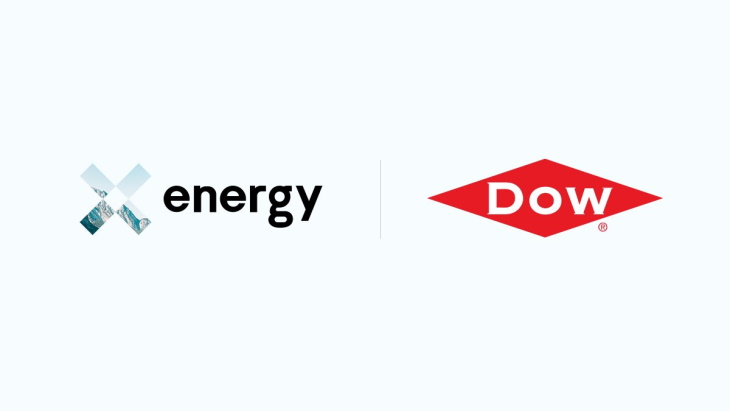Dow to decarbonise with advanced nuclear
Materials science company Dow is to collaborate with X-energy to deploy Xe-100 high-temperature gas reactor technology to provide carbon-free process heat and power to one of Dow's US Gulf Coast sites. The reactor is expected to be operational around 2030.

(Image: X-energy)
The two companies have signed a Letter of Intent which they say will help Dow advance its carbon emissions reduction goals through the development and deployment of X-energy's advanced small modular reactor (SMR) nuclear technology. Dow also intends to take a minority equity stake in X-energy.
"Advanced small modular nuclear technology is going to be a critical tool for Dow's path to zero-carbon emissions and our ability to drive growth by delivering low-carbon products to our customers," Dow Chairman and CEO Jim Fitterling said. "X-energy's technology is among the most advanced, and when deployed will deliver safe, reliable, low-carbon power and steam. This is a great opportunity for Dow to lead our industry in carbon neutral manufacturing by deploying next-generation nuclear energy."
The Xe-100 is one of two designs selected by the US Department of Energy to receive USD80 million each of initial cost-shared funding to build an advanced reactor demonstration plant that can be operational within seven years. A four-unit Xe-100 plant is planned for construction at a site in Washington state.
Each Xe-100 reactor is engineered to operate as a single 80 MW electric unit, optimised as a four-unit plant delivering 320 MWe. The reactor can provide baseload power to an electricity system or support industrial applications with 200 MW thermal output per unit of high pressure, high temperature steam.
"Nuclear energy has always offered the promise of broad economy-wide decarbonisation," X-energy CEO Clay Sell said. "Today's announcement marks an important step in turning that aspiration into reality."
SMRs are seen as a key technology to enable energy-intensive industries to decarbonise. Dow is working to deliver a 30% reduction in its scope 1 and 2 carbon emissions from 2005 levels by 2030, aiming to achieve carbon neutrality by 2050. The company is working to transition its sites and operations globally to cleaner power. In 2021, it said, it obtained more than 25% of its purchased electricity from renewable sources and is today among the top 20 users of clean energy among global corporations.
Researched and written by World Nuclear News
- China Institute of Atomic Energy
- Nuclear Power Institute of China
- Southwestern Institute of Physics
- China Nuclear Power Operation Technology Corporation, Ltd.
- China Nuclear Power Engineering Co., Ltd.
- China Institute for Radiation Protection
- Beijing Research Institute of Uranium Geology (BRIUG)
- China Institute of Nuclear Industry Strategy (CINIS)
- China Nuclear Mining Science and Technology Corporation


